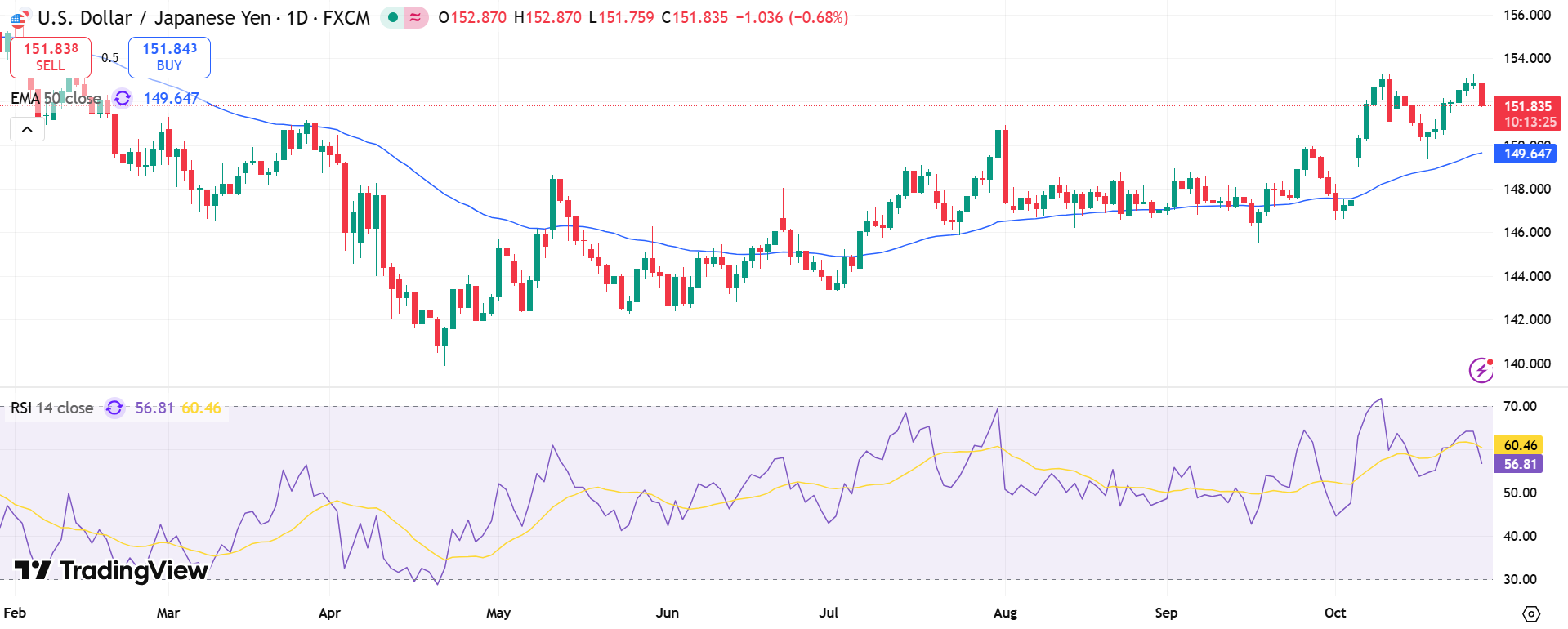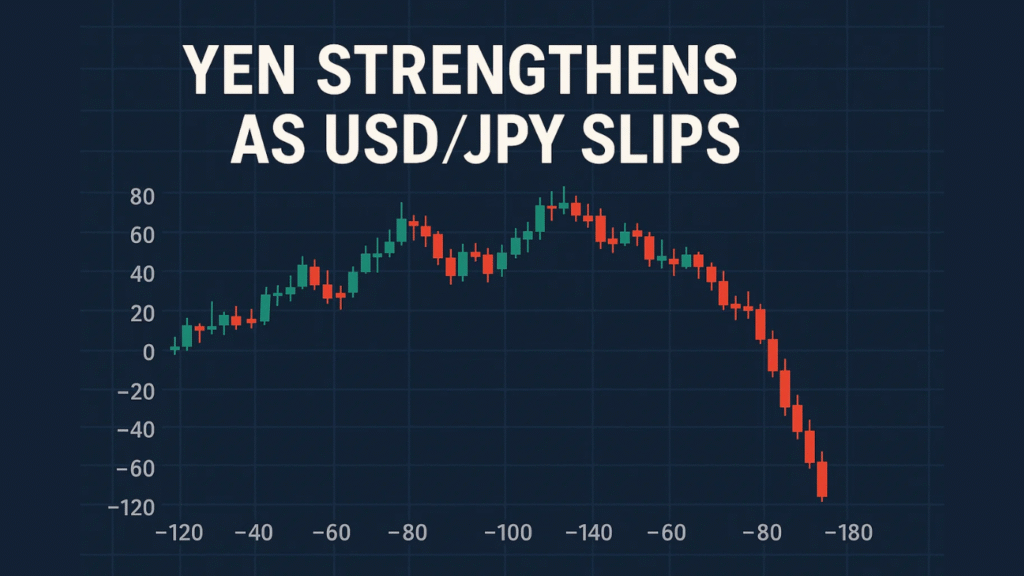The USD/JPY pair remained under pressure during Tuesday’s Asian trading, hovering below 152.50, as Japan’s renewed verbal intervention and improving trade sentiment strengthened the Yen. The pair’s earlier rebound toward 153.30—a key resistance level tested in early October—fizzled after Finance Minister Satsuki Katayama signaled closer coordination with the United States.
Katayama, following a meeting with U.S. Treasury Secretary Scott Bessent, confirmed continued communication between the two nations while downplaying direct talks on monetary policy. Markets interpreted her comments as a subtle form of jawboning—verbal signals aimed at curbing speculative weakness in the Yen without actual market intervention.
Investors have taken this as a cue that Tokyo may be preparing to step in more forcefully should the Yen face renewed depreciation pressure.
Key developments include:
- USD/JPY resistance: 153.30 level remains a psychological cap.
- Japan’s stance: Ongoing coordination with the U.S. on market stability.
- Market tone: Traders turn cautious ahead of dual central bank meetings.
Fiscal Concerns Ease, Yen Finds Support
The Yen, which had shed nearly 2% since Prime Minister Sanae Takaichi took office, found relief after reassurances that Japan’s fiscal policy will remain under control. Investors had previously feared that Takaichi’s expansionary spending could worsen Japan’s debt burden, already among the highest in the developed world.
Katayama’s remarks helped temper those concerns, leading to modest Yen buying as public finance fears receded. The USD Index (DXY), meanwhile, softened amid renewed optimism over U.S.–China trade negotiations, further reducing demand for the safe-haven Dollar.
Market sentiment appears to be stabilizing, though traders remain wary of renewed volatility if policy signals from the Bank of Japan or the Federal Reserve diverge.
Fed and BoJ Policy Decisions in Focus

Attention now shifts to the Federal Reserve and Bank of Japan (BoJ) meetings later this week. Markets widely expect the Fed to cut rates by 25 basis points, lowering the target range to 3.75%–4.00%. Softer U.S. inflation data has given policymakers more flexibility to ease borrowing costs amid signs of labor market cooling.
The BoJ, by contrast, is expected to hold rates steady at 0.5%, while hinting at a possible 25-basis-point hike in December. Any hesitation from Tokyo in signaling future tightening could reignite Yen weakness, particularly if U.S. yields remain elevated.
With the USD/JPY now anchored near 152.40, traders are bracing for sharp movements as both central banks reveal their next moves—potentially setting the tone for currency markets heading into year-end.


